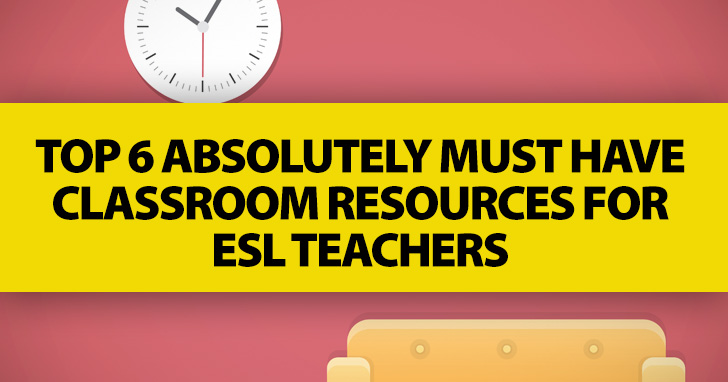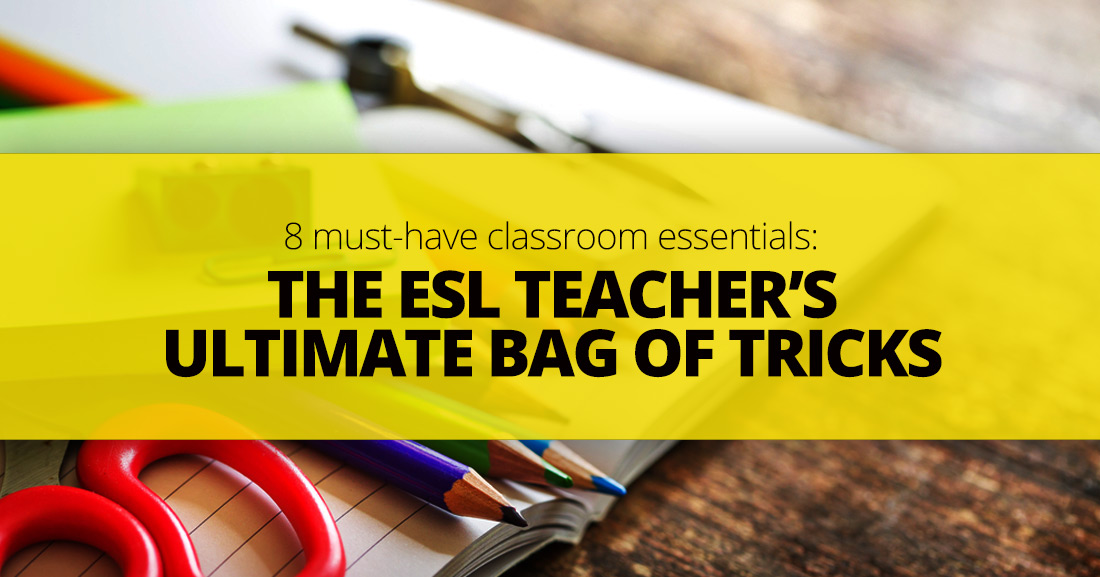Top 6 Absolutely Must Have Classroom Resources for ESL Teachers


Very few teachers will attempt educating young minds without text books, a white board or chalk board, pencils, paper, and your other classroom standards. But what you may not have are some less than typical who-thought-of-using-this-for-educational-purposes items. If you don’t, you may not realize how useful these items can be in teaching English to young learners. How many of these items in the ESL teacher’s ultimate bag of tricks do you have handy?
You might have recorded dialogues ready for class and even have them cued up to the right track. But do you have music CDs in your classroom? Young learners love to learn along with music. There are so many ways you can use a CD in your classroom. Not only can you teach interesting and unusual vocabulary through song lyrics, you can also get your students up and moving, following directions in the song (e.g. if you’re happy and you know it clap your hands, shake your sillies out, etc.) And since one of the seven learning styles is musical, playing theses CDs in class will engage some learners in the best way they can learn. Once your students are familiar with the melody of some favorite songs, try changing the lyrics to teach grammar points or tie in with whatever subject you are studying in class these days.
My local library has a large collection of hand puppets. You might wonder what puppets have to do with books and learning, but they are a great asset for the ESL teacher. One of the most straightforward ways to use puppets is to model dialogues for your students. But just having puppets on hand during free learning periods will encourage your students to talk with one another through these colorful characters. You don’t have to purchase expensive puppets, either. Try making some in class as an art project which will also give your students listening practice following the directions you give.
Beach balls, sponge balls, ping-pong balls, wadded up pieces of paper…you are missing out if you don’t have a collections of balls in your classroom. Balls can be used so many ways in your ESL classroom, I won’t go into them all here. But check ideas on using these go to fun machines in your ESL class.
Sometimes we all need a little bit of comfort, and stuffed animals might be just what the doctor ordered for some of your young ESL students. But don’t limit stuffed animals to boo-boo therapy. Try teaching prepositions with one or two stuffed animals and another classroom object such as a pencil. You can use stuffed animals when teaching descriptive words or comparative and superlative adjectives. And of course, your young learners will love using stuffed animals for dialogue practice and conversation practice just as they do the puppets you have on hand.
I love dice! It’s not because I’m a gambler. Nothing is father from the truth. But dice are great for games in the ESL class. Use them to practice numbers, but don’t stop there. Make book exercises more fun by having students roll the dice to see what question they should answer. Keep some white board dice handy and write vocabulary words that students will roll and give synonyms or antonyms for. Or put small pictures on your dice and have students make up stories including the elements you drew on the dice. For other great ideas on how to use dice, check out this article.
Kids love to be creative, so make sure you keep a supply of colored pencils, markers, paints, paper, glue, scissors, and any other art materials you can find. Art is great for expressing feelings and thoughts. Drawing pictures can let you know what students understand even when they can’t express themselves in words. And students love to illustrate stories or draw pictures and label vocabulary items in their pictures. Art projects are great for talking about color, texture, and shape, and going through how to do a specific project is always good for seeing how well students can follow directions.
Ok, I’ll admit stickers are pretty common in young classrooms, but are you using them for more than just decorating a well completed paper? Try using stickers for comparative statements or to talk about how something looks. Let students put a few stickers on a page and then draw picture around them, then use that picture as inspiration for a story. Put stickers on students’ backs and have them mingle and ask each other yes/no questions till they figure out what sticker is on their back for a fun and simple speaking activity. Use stickers to make flashcards and memory games. Best of all, stickers are super inexpensive, and you can keep a steady supply for both rewards and creative activities.
I’ll never forget the cardboard treasure chest my dentist had when I was growing up. After every checkup, each patient got to choose a prize from the treasure chest. Inside were stickers, beads, pencil sharpeners, and all sorts of simple little prizes. You will do well to have something similar in your classroom to motivate your students. Kids love to get stuff, even if that stuff costs next to nothing. You can reward students for good performance, for class participation, for raising good questions in class, or for any of a number of other positive behaviors. Have team competitions and reward the winners with a prize from your box.
While you’re gathering your ultimate list, don’t forget to take care of yourself with tissues, water, and throat lozenges. And having a few character band aids on hand for those unavoidable boo-boos will go the extra mile in showing your students just how much you care.